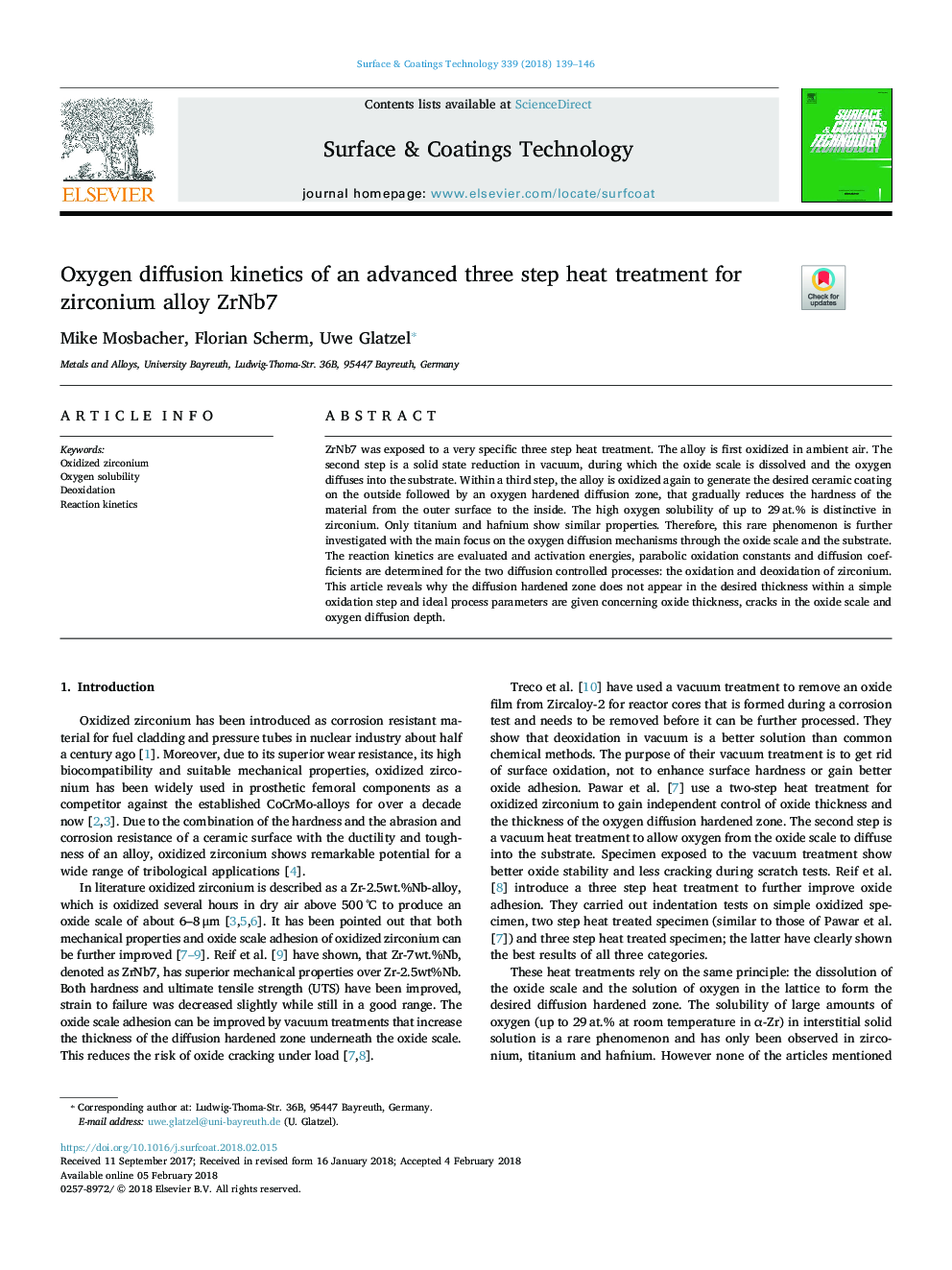| Article ID | Journal | Published Year | Pages | File Type |
|---|---|---|---|---|
| 8024169 | Surface and Coatings Technology | 2018 | 8 Pages |
Abstract
ZrNb7 was exposed to a very specific three step heat treatment. The alloy is first oxidized in ambient air. The second step is a solid state reduction in vacuum, during which the oxide scale is dissolved and the oxygen diffuses into the substrate. Within a third step, the alloy is oxidized again to generate the desired ceramic coating on the outside followed by an oxygen hardened diffusion zone, that gradually reduces the hardness of the material from the outer surface to the inside. The high oxygen solubility of up to 29â¯at.% is distinctive in zirconium. Only titanium and hafnium show similar properties. Therefore, this rare phenomenon is further investigated with the main focus on the oxygen diffusion mechanisms through the oxide scale and the substrate. The reaction kinetics are evaluated and activation energies, parabolic oxidation constants and diffusion coefficients are determined for the two diffusion controlled processes: the oxidation and deoxidation of zirconium. This article reveals why the diffusion hardened zone does not appear in the desired thickness within a simple oxidation step and ideal process parameters are given concerning oxide thickness, cracks in the oxide scale and oxygen diffusion depth.
Related Topics
Physical Sciences and Engineering
Materials Science
Nanotechnology
Authors
Mike Mosbacher, Florian Scherm, Uwe Glatzel,
